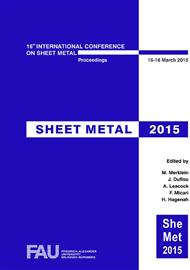p.451
p.459
p.469
p.477
p.485
p.493
p.501
p.509
p.517
On the Solid Bonding Phenomena in Linear Friction Welding and Accumulative Roll Bonding Processes: Numerical Simulation Insights
Abstract:
Solid Bonding based welding processes allow to obtain defect free joints with low residual stress and low distortion. However, the engineering and optimization of solid bonding processes is difficult and requires a large number of time and cost consuming test trials. In this way, proper numerical models are essential tools permitting effective process design. The aim of this research was the comparison of the material process conditions during two different manufacturing processes taking advantage of the same metallurgical phenomenon, namely solid bonding. Linear Friction Welding, used to weld non-axisymmetric components and Accumulative Roll Bonding, used to increase the mechanical properties of sheet metals, were considered. Numerical models were set up, validated and used to design the process by studying the complex material behavior during the solid bonding of different aluminum alloys. An implicit approach was used for the Linear Friction Welding and Accumulative Roll Bonding processes, leading to the understanding of the main process variables influence on the field variables distribution and the occurrence of actual bonding.
Info:
Periodical:
Pages:
485-491
Citation:
Online since:
March 2015
Authors:
Keywords:
Price:
Сopyright:
© 2015 Trans Tech Publications Ltd. All Rights Reserved
Share:
Citation:


